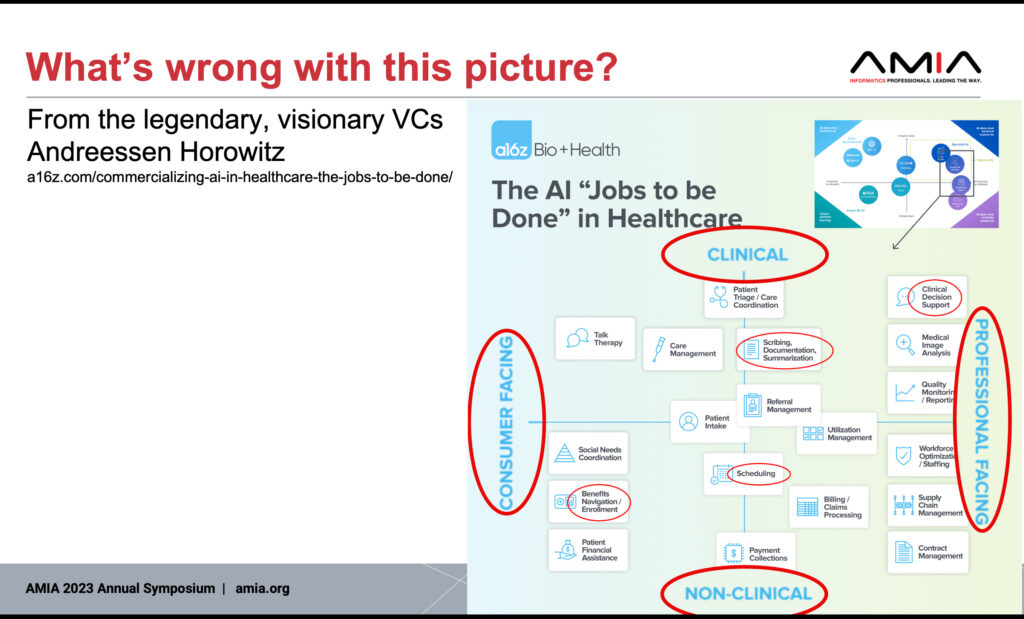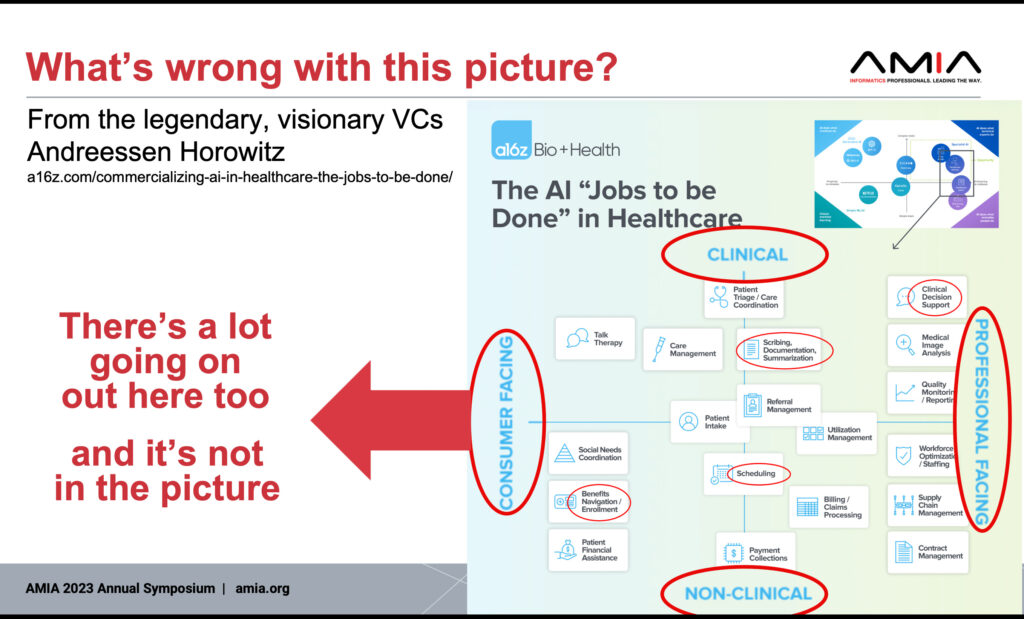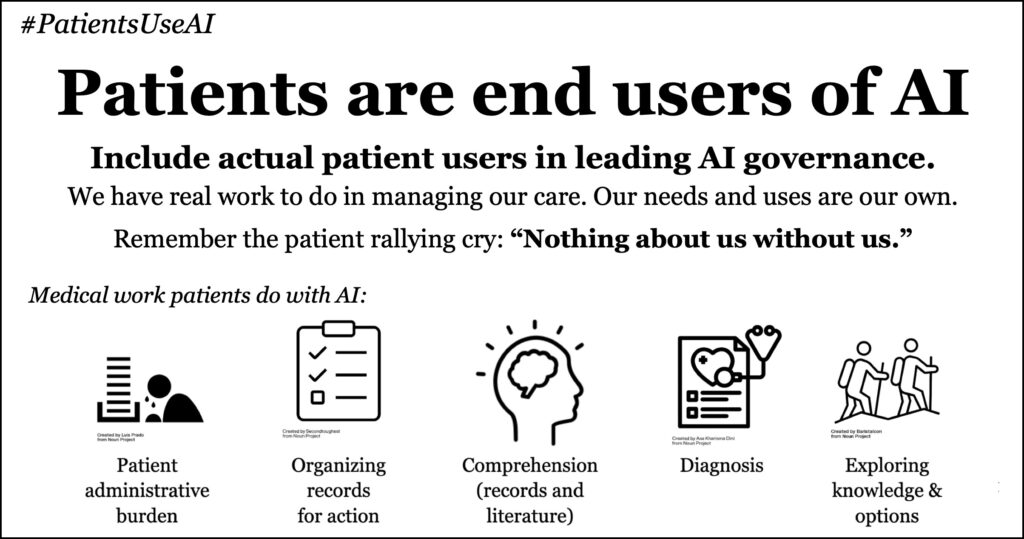There’s something important in this, so I hope you’ll give it some thought. Patients are being overlooked as users of artificial intelligence (ChatGPT etc), and we need to fix that.
On March 22 I spoke in Boston as the consumer (aka patient) voice on an important panel. The event was the annual AMIA Informatics Summit, and the panel was the latest in an ongoing project on how to be responsible yet effective about AI’s immense potential to improve healthcare. (More on the project below.)
Most of the 90 minute session was reserved for audience Q&A, so for opening statements, each of us five panelists was only given 7 minutes. Yikes! So I did what any empowered person would do: did my best in 7 minutes, then came home and recorded what I wanted to say … which took 20 minutes. :-) For the impatient, the video is above, or you can read the discussion below first.
As you’ll see in the video, in researching this talk I ran across an excellent graphic from the legendary Silicon Valley investors Andreessen Horowitz, segmenting the “AI in healthcare” space across two scales: clinical or not (top to bottom) and patient-facing or doctor-facing (left to right). All the work being done in every medical practice appears somewhere in that space. But something didn’t sit right. What’s wrong with this picture?

The answer is the big blank space on the left: everything consumer-patients do outside of the healthcare establishment, which is exactly what I’m blogging about these days: #PatientsUseAI too. We patient users are out of the picture, so there’s a giant blind spot in the conversation. And you can’t govern wisely if you’re blind to an important stakeholder. The next slide filled in the blank, the blind spot:

In the rest of this expanded talk I walked through each of the so-called “use cases” (typical uses) we patients and caregivers and advocates are finding … real work that we routinely have to do in getting the care we need. They’re what I’ve been blogging about:

A historic moment in medicine – for patients as well as doctors.
Make no mistake, the arrival of LLMs in medicine is easily the biggest leap forward in “how to doctor” in the past century. But it also promises to be the biggest leap ever in “how to patient.” And we know all too well what happens when patients are overlooked in planning something new: years later we have seminars on why healthcare isn’t more “patient centered.”
Well DUH, you left us out of your planning!
Let’s not do that this time. This time we have a chance to stop the problem at its root. Let’s recruit the ultimate stakeholder – patient AI users – to help lead governance of AI policy.
Recognition is due to DCI Network and AMIA
At top of post I mentioned an ongoing project I’ve been fortunate to be in since last September. It’s Blueprints for Trust: Best Practices and Regulatory Pathways for Ethical AI in Healthcare, co-managed by AMIA and the DCI Network at my hospital, Beth Israel Deaconess.
- DCI is the Division of Clinical Informatics at my hospital, Beth Israel Deaconess.
- AMIA is the American Medical Informatics Association, a group of health data professionals who don’t just move the bytes around – they care about the meaning conveyed by all those bytes, and they’ve long had a particular interest in patients’ role in health IT. (Ten years ago I did the opening keynote (video) at their big annual conference.)
Many many thanks to DCI Chief Dr. Yuri Quintana and to AMIA’s SVP of Education, Jeff Williamson, for their work in proactively ensuring that patient voices are included in their organizations’ work, including supporting my presence on this panel.
Links mentioned in the talk
- The Andreessen Horowitz page I cited. It’s excellent, as far as it goes. Can we do something comparable for patient applications??
- The #PatientsUseAI series on my blog
- Eric Topol’s astounding TED Talk on AI (recorded Oct 2023, released in Dec) Closing line: “It’s so damn exciting!”
- The Today.com diagnosis story he cites (17 doctors over 3 years)
- Society for Participatory Medicine


Dave, so glad you are taking up this issue. There are huge, immediate needs to build competencies in AI by patients/patient leaders and action by AI companies and creators to engage with patients.